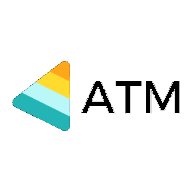The future of advertising isn’t quite clear. Today the advertising industry is in front of a big change. The future of advertising will be on the Internet, this is sure, but here “advertising as usual” models don’t work.
Today we must think over about some facts:
- Lack of effective online advertising strategies
- No connection between advertisers-publishers-people
Small and fragmented budgets - Internet as a SuperMedia (including all the others)
- No more intermediaries with no added value
- Users can recognize good companies and products, despite advertising campaigns
We need to define new models of advertising. And we need to free our minds from the success of traditional advertising.
In a very broad sense, Advertising would include all types, formats, delivery medium and channels (Ex: print/online, word-of-mouth/traditional, TV/mobile, etc). However, assuming that your assignment focuses a lot on the future of “Online/Internet Advertising”, I’ll mention what the future looks like. Here are some trends that should help you get started, collect data and prepare your deck. Some of these are already being implemented but the impact is bound to increase in future as advertisers get equipped with better technologies.
1. Multiple devices – Online advertising is no longer about ads displayed over websites, mostly for large screen. More and more people are now consuming content over smartphones, smart wearable devices (Ex: Apple Watch, Google Glasses), Smart (Internet) TV, Gaming consoles, etc. All of these have the potential to target audience for ads. In the future, we’ll see ads being specially designed and delivered for all of these device types and screen sizes.
2. Multiple formats – Banners, Rich text, Video, Audio, Native; online ads are available in all formats. This is definitely not an exhaustive list. In future, we’ll see more such formats that allow greater audience interaction.
3. Audience Targeting – We use multiple devices, have profiles on various social media portals and perform search on multiple forums. All of this in a way defines who we are, what we are interested in and what kind of ads would have the biggest impact on our purchase decisions. In future, technology will help advertisers identify very specific audience needs and serve ads based on these needs.
4. IoT – Internet of Things is a massive wave that promises to get our ecosystem of devices interconnected and greatly determine that way we interact with them. Any of these devices that are capable of communicating via images, video or audio are potential channels for very targeted ad campaigns.
So what’s the Future of Programmatic?
1. Is it ‘Machine Learning and Big Data integration’?:
DM’s backbone is a galaxy of user data (browser cookies). Integrating Machine Learning or AI will allow the tools to automatically bid and run an ad selection process for the particularly targeted audiences using a particular device in the geo-targeted region when they’re searching for a specific term based on their interest
2. Are we moving towards advanced ‘Brand Safety’ measures?:
Currently, Programmatic doesn’t guarantee 100% brand safety to the advertiser. A common example taken: There’s always a possibility that an airlines ad lands in an ad unit next to ‘plane-crashed last night’ news headlines
3. Are we moving towards One-To-Moment marketing?:
Moving forward, it is necessary to get the right message in front of the right people at the right time, in real time which will drive the business with ample growth
4. For every individual client,
early in this decade, everyone is concentrated on ‘audience-first strategy’ to get the right audience targeted, whether it is for remarketing, sales or for brand awareness
5. TV ads are also integrating into Programmatic.
This will be one of the modernized parts in DM: Per my understanding, let’s explain this: Suppose, I’m watching cricket on TV. With cross-device tracking methodology, an advertiser selling sports stuff (like shoes or whatever) will deliver an ad during the Advertisement part. At the same time, if I’m following the run rate on my mobile (in-app), it will serve a remarketing ad to buy the same item, which will definitely increase the conversion rate.
6. Integrating digital (display or video) ads in Offline Marketing:
What if an offline hoarding is connected to an ad server, and shows a product relevant to the weather, nearby brand stores/ food courts, based on the GPS traffic and common interest of nearby users! – That should be an evolution, right! The technology should integrate AI, one-to-moment marketing, and audience-first strategy
Here’s an example of marketing by British Airlines: British Airways – #lookup in Piccadilly Circus #DiscoverBA
7. Advancement in Psychographic Segmentation Targeting:
Recently one of the social media ad campaigns influenced people in political aspects by psychographic segmentation targeting. This seems to be the next level in Programmatic Marketing which slowly attracts people and influence them psychologically
8. Blockchain :
On implementing a Guardian-like app (a site crawlable agent) to ensure Brand safety, which will constantly monitor the site contents/ comments on a page and will prevent ads showing up next to the irrelevant content/comments on the page, per the desire of the advertiser.
9. AR & VR:
Recently IKEA store in Hyderabad India has shown the glimpse of using VR (in Auto Rickshaws) to attract people to their store. No idea how fast the industry is pacing ahead, but combing AR (Augmented Reality) and VR (Virtual Reality), programmatic advertising can rise as high to the sky.
Source: Internet and article updates from e-magazines










